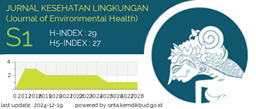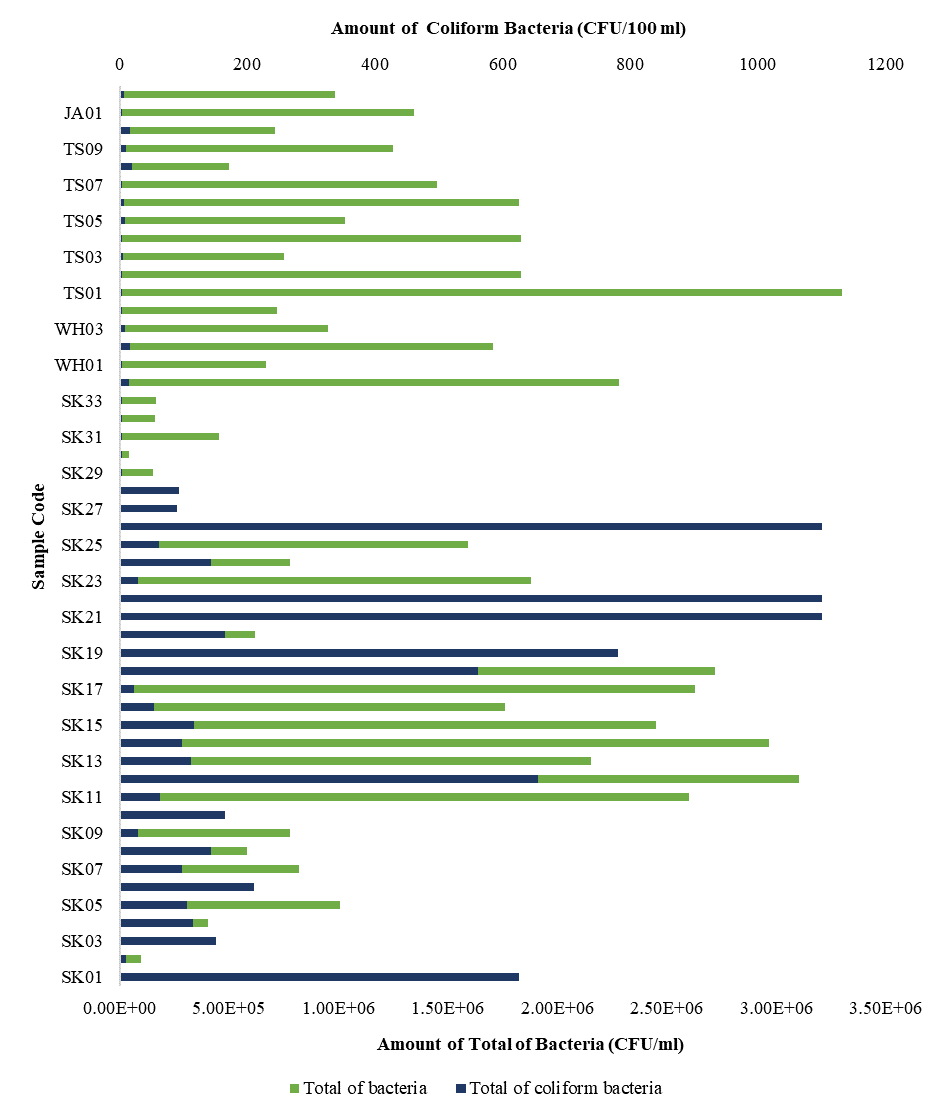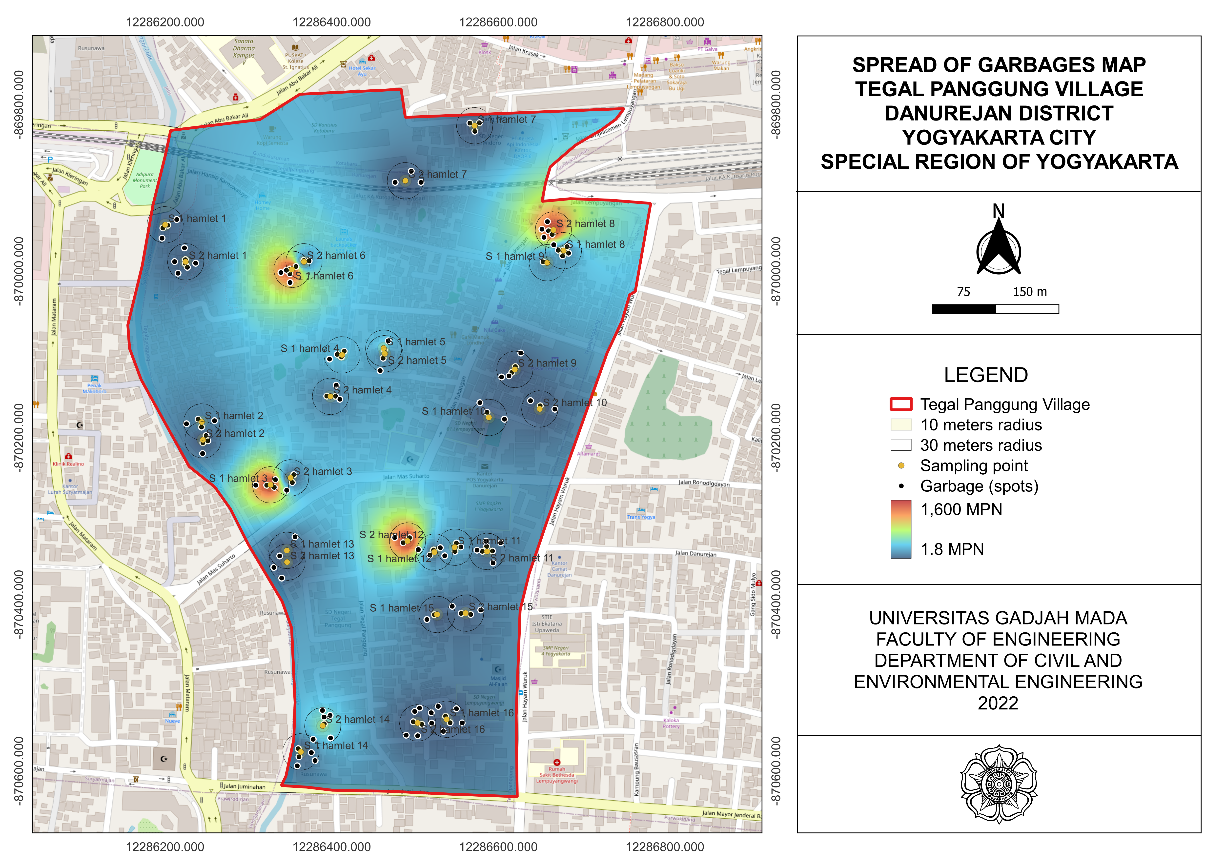GUIDELINE FOR AUTHOR

Guideline for Author - Jurnal Kesehatan Lingkungan
Article Template - Jurnal Kesehatan Lingkungan
GUIDELINE FOR AUTHOR
Jurnal Kesehatan Lingkungan (Journal of Environmental Health) is a scientific open access journal published by the Faculty of Public Health, Universitas Airlangga. All manuscript received will be reviewed by a peer-reviewed with a double-blind method. Authors who will do the script to read the writing instructions below:
SUBMISSION OF MANUSCRIPT
1. Process of submitting manuscript, please open the page https://e-journal.unair.ac.id/JKL/login
2. If you don’t have an account and password, please make it first then can log in using the account and password you have created. Prepare the script according to the instructions below.
3. The submitted script will undergo a strict editorial examination for plagiarism and writing format. Please upload the plagiarism test results/ Turnitin results together with the article and the supporting file, manuscripts that don’t pass the initial check will not proceed to the reviewer.
4. Please download form conflict of interest and form copyright agreement. The author must fill in the form and upload along with the script and ethical certificate of the manuscript derived from the research that has an invasive action, if the manuscript doesn’t take invasive action, then simply include a letter of research permit. Download the form in the Supporting File Menu or click here.
5. The script will not be processed if it doesn’t follow the journal's minimize style and writing instructions.
PREPARATION OF MANUSCRIPT
Language
Manuscript submitted must be well structured in English. The author is responsible for Translating and Proofreading the manuscript. Author can use any tools to structure manuscript in English such as Grammarly. There are several requirements for authors regarding manuscript proofreading in order to keep the manuscript quality.
1. Proofread has to be done before and after the review stage. Proofread must be done by a professional agent for proofreading proofed with statement letter and receipt from the agency. Jurnal Kesehatan Lingkungan (Journal of Environmental Health) does not provide proofreading except final proofreading in editing stage.
2. Make sure to turn on "Track and Changes" in Ms. Word to indicate correctness while proofreading the manuscript.
3. Upload the documents and the proofreading certificate together with the article during the submission process or upload in the discussion column provided in the journal website (OJS).
Document Organization
Make sure all the documents below are ready to be uploaded during submission:
1. Manuscript (full article with table and graphic in the last page of article). Download template here.
2. Tittle page
3. Copyright Assignment Form (sign by all of authors)
4. Form conflict of interest (sign by all of authors)
5. Ethical clearance (for the study with invasive actions) or the research permit (for non-invasive studies)
6. Table and Graphic (editable version)
7. Plagiarism test results/ Turnitin results
8. Proof of proofreading (article and the certificate of proofreading)
Title Page
A separate document from the manuscript and uploaded in the section supplementary file consisting of:
- The title of the manuscript in Indonesian and English
- Full name of all author
- Full address and the name of the institution and postal Code of all the author
- Detailed information from corresponding author (name, email and telephone)
General
- Script written in Word format at least MS-Office 2010
- Paper used A4 size with top margin, down, left and right by 3 cm.
- The script is typed with the letter Arial size 10 pt with double space.
- Don't use bold letters to emphasize the text except for the chapter or sub-chapter.
- Don't use the automated features in your software except for reference manager.
Abstract and Keywords
- Abstract should be an informative summary of your script.
- Abstract must follow a predefined structure which includes the introduction, methods, results, discussion and conclusion with a maximum word count of 250 words and a maximum number of keywords 5.
- Abstract that contains background written in past tense and present tense, while research objectives, research methods, results and discussion, as well as conclusions are written in past tense.
Tables
- Entire table must be put separately from the main manuscript. Please put the table in the last page of the manuscript.
- Give the table number sequentially in Arabic numerals (Table 1, Table 2, table 3, etc) in the order of the first quote in the text
- Give a clear and informative title in each table
- Table header must be written in Times New Roman size 10 pt and bold
- Table content written in Times New Roman size 8 pt with single space
- If the table comes from another publication, it is mandatory to include the source
- The maximum number of tables and figures allowed is five (5).
Figures
- Whole figure or graphic must be put separately from the main manuscript and submitted in 1 separate file as supporting file (Graphic submitted in supporting file must be in an editable version)
- Give figure number sequentially in Arabic numbers (Figure 1, Figure 2, Figure 3, etc.) in the order of the first quotation in the text
- The image Format can be JPEG/TIFF with a minimum resolution of 300 DPI and dimensions of 1,000 x 1,000 pixels. Color images in CMYK or RGB format.
- Letters, numbers and symbols should be clear and evenly distributed, and with sufficient size that when the size is reduced to publication, each item will still be clearly identifiable.
- If the image comes from another publication, it is mandatory to include the source. Write down the source right after the figure/ graphic before figure title.
- The maximum number of tables and figures allowed is five (5).
Abbreviations and Symbols
- The full term and abbreviations on the first writing should be clearly followed by parentheses, such as the Personal Protective Equipment (PPE). Then just use the PPE.
- The abbreviations used must be those based on international standard.
- Weight, volume, etc. must be written with metric standards.
Data
- Numbers in both the core text and the table must be displayed as a percentage (%).
- Data analysis using averages must be followed by a standard deviation and a median of thousands of data using a comma format, e.g. (IDR 123,300).
- Fractional data uses the point format, e.g. (height 172.4 cm).
- The significance value must be displayed for example (P = 0.006).
Acknowledgments
The acceptable contribution includes general support by the institution/institution/head both in the form of technical assistance, and financial support and or materials (including grants). Mention conflicts of interest, if any.
References
- The citation and references must be generated using Reference Manager such as Mendeley, Endnote, Zotero, etc in Vancouver style.
2. The reference must be completely derived from the Scientific Publication of the journal article published in the last 5 year since the article submitted to Jurnal Kesehatan Lingkungan (Journal of Environmental Health)
with 50% of it must be published in reputable international journal.
3. Unpublished sources, such as manuscript or personal communication, cannot be used as reference text.
4. References in text, tables, and legends must be numbered in parentheses e.g. (1), (1, 4), (1-3), (1, 3-5) and are quoted sequentially according to the sequence of appearances in the manuscript.
5. Don’t include references on the abstract list of libraries in the table, images and panels must be in numerical order according to where the item is quoted in the text
6. Reference from the online journal must include DOI (Digital Object Identifier) or the link of article in the journal website.
7. The minimum reference to use in Original Research Article is 40 references and 50 references for the Literature Review Article.
The writing style of the Vancouver for the standard Jurnal Kesehatan Lingkungan (Journal of Environmental Health)
Standard Format for Journal
Manuscript journal 1-6 author
1. Tresamol VP, Antony MA, Mini KV, Siju J. Seroprevalence of Leptospirosis among Cattle in and Around Thrissur District, Kerala. International Journal of Livestock Research. 2017;7(3): 45-48. https://doi.org/10.5455/ijlr.20170124044946
Manuscript Journal of more than 6 authors
- Chadsuthi S, Bicout DJ, Wiratsudakul A, et.al. Investigation on predominant Leptospira serovars and its distribution in humans and livestock in Thailand, 2010-2015. PLoS Negl Trop Dis. 2017;11(2). https://doi.org/10.1371/journal.pntd.0005228
Authors’ Contribution
This section explained about individual author contributions. All authors declare that they are participating actively in research and article writing and partly responsible for the content of writing, including in the preparation and writing of concepts, designs, analysis, or revision of the article. The role(s) of all authors should be listed. Example: PA: Conceptualization, Methodology, Software. SA: Data curation, Writing- Original draft preparation. SH: Visualization, Investigation. AK: Software, Validation.: YK: Writing- Reviewing and Editing.
CATEGORY OF MANUSCRIPT
Manuscript types that is acceptable in Jurnal Kesehatan Lingkungan (Journal of Environmental Health) is Original Research and Literature Review. Due to the complexion of Meta-analysis article, it is decided that the Meta-analysis article should follow the Original Research format. Every chapter must be written as directed in the writing systematics. Please pay attention to each type of manuscript.
Original Research
-
- The category of native research if it is a research report written by researchers who actually do research
- Researchers describe their hypothesis or research questions and the purpose of this research.
- Researchers detailing their research methods.
- The results are written in detail as well as an interpretation of data analysis to interpret possible research impacts.
- The number of words in the main manuscript is at least 3,500 words and maximum 4,000 words.
- List of reference used at least 40.
- Writing systematics are as follows:
1) Title
Title titles are made short, dense, informative. The title should display the most important result of the research.
2) Abstract
See the abstract section above.
3) Introduction
Provide an overview of the background of the study, identification of problems, and statements of purpose and hypotheses that will be tested in this study. The introduction should include data related to problems that develop relatives from similar studies.
4) Methods
The researcher's method is expected to provide a detailed description of:
- Research designs, as well as the population under investigation or the experimental model used.
- Operational definitions of external variables (results) and instruments used.
- Methods for estimation and measurement of exposure variables / independent / exposure
- The classification and categorization of variables from the value class of the variable used.
- All stages of statistical analysis and software used.
5) Results - Explanation results are made clear and concise without providing interpretation and extrapolation of the results being reported.
- Researchers don't need to provide explanations on the methods at the beginning of the results.
- The entire results of the analysis and experiments were reported in the manuscript including the results of the analysis of sensitivity and secondary analysis.
- Reported results are not limited to significant statistic-only results or results selected to support research hypotheses.
- It is worth mentioning clearly the number of observations in each analysis, as well as information on missing data, how to handle and analysis.
6) Discussion - Researchers are expected to provide reviews and other information needed to put the research findings into the context of the population being observed.
- Researchers used the complete and balanced sources of the library including studies inconsistent with hypotheses, results and conclusions from current studies.
- Researchers convey honestly related to the weakness of the research.
- No need to re-mention the methods or results at the beginning of the discussion.
7) Conclusion
The author's is expected to summarize the main findings in brief, solid, and clear and answer research objectives. This conclusion can be concluded with suggestions and things that can be done in the future (if deemed necessary). - 8) Acknowledgments
- See the acknowledgments section above
- 9) Authors' Contribution
- See the authors’ contribution section above
10) References
See the reference section above
Literature Review
-
- Literature review is a method that is systematic, explicit and remanufactured to conduct identification, evaluation and synthesis of the work of research results and thought results that have been produced by researchers and practitioners.
- The purpose of the Literature Writing Review is (1) providing a background/base theory for research to be conducted, (2) study the depth/breadth of existing research on topics to be researched and (3) Answer practitioners ' questions with an understanding of what previous research has produced.
- Word count in a main manuscript is at least 4,500 words.
- Reference used at least 50.
- Writing systematics are as follows:
1) Title
Title titles are made short, dense, informative. The title should display the most important result of the research
2) Abstract
The abstract for literature review consists of the introduction, discussion, and conclusion sections.
3) Introduction
Introduction gives an overview of the research background, the identifying problems or research questions underlying the constituent literature review. At the end of the section tell the special purpose of the review answering questions.
4) Discussion
- Researchers are expected to provide reviews as well as other information needed to put the research findings into the context of the population being observed.
- The review table goes into this section consisting of the name of the researcher, the title of the research, population, methods, outcomes and conclusions.
- Researchers used the complete and balanced sources of the library including studies inconsistent with hypotheses, results and conclusions from current studies.
- Researchers convey honestly related to the weakness of the research.
- No need to re-mention the methods or results at the beginning of the discussion.
5) Conclusion
The author's is expected to summarize the main findings in brief, solid, and clear and answer research objectives. This conclusion can be concluded with suggestions and things that can be done in the future (if deemed necessary). - 6) Acknowledgments
- See the acknowledgments section above
- 7) Authors' Contribution
- See the authors’ contribution section above
8) References
See the reference section above
PLAGIARISM
- Please note that the entire manuscript submitted at Jurnal Kesehatan Lingkungan (Journal of Environmental Health) will be checked for plagiarism.
2. In the initial stage, the author has to do plagiarism check to the manuscript and upload it during submission.
3. In cases where a particular quotation will lose its original meaning and essence if the paraphrase is attempted, the journal requires the author to include a quotation in quotation marks ("") to indicate that it is a direct quote from the source. But should not be excessive.
4. Jurnal Kesehatan Lingkungan (Journal of Environmental Health) provides a maximum tolerance of 10%.
DOUBLE PUBLICATION POLICY
- Manuscript is identical and similar to previous publications it cannot be processed in the Jurnal kesehatan lingkungan (JKL).
- If you have doubts (especially in the case of material that you have published), we ask that you continue your submission but by including a copy of the relevant works that are previously issued or works that are being considered by another journal.
ETHICS
Ethics Committe Agreement
The authors must state in writing that the research is conducted under the prevailing laws and regulations. Can be seen also the Helsinki declerracy. The Editor reserves the right to reject papers that don't include ethical approval for manuscript derived from research with invasive actions.
Informed Consent
Consent for Publication, If your manuscript contains any individual person's data in any form (including individual details, images or videos), consent to publish must be obtained from that person, or in the case of children, their parent or legal guardian. All presentations of case reports must have consent to publish. You can use your institutional consent form or our consent form if you prefer. You do not need to send the form to us on submission, but we may request to see a copy at any stage (including after publication). See our editorial policies for more information. If your manuscript does not contain any individual persons data, please state "Not applicable"” in this section.
Animal Experiments
Studies involving animals must include a statement on ethics approval. In papers describing experiments on living animals, include (1) a full description of any anaesthetic and surgical procedure used, and (2) evidence that all possible steps were taken to avoid animals' suffering at each stage of the experiment. In experiments involving muscle relaxants, describe the precautions taken to ensure adequate anaesthesia. If your manuscript does not report on or involve the use of any animal or human data or tissue, this section is not applicable to your submission. Please state "Not applicable"” in this section.
Invasive to Human Intervention
Statement that the experiment was conducted with the understanding and approval of each participant, and the statement that the committee responsible and ethical has approved the trial.
Consent from Potentially Vulnerable Respondents
Studies that involves potentially vulnerable groups, for example children, older persons or adults with learning disabilities), every effort should be made to secure freely given informed consent that participants have actively provided. It has to ensure that they have the opportunity and time to access support in their decision-making (discussing their choice with a trusted adult or relative).
Ethical Statements of Jurnal Kesehatan Lingkungan (Journal of Environmental Health) in details can be accessed in this link https://e-journal.unair.ac.id/JKL/EC
Publication Ethic of Jurnal Kesehatan Lingkungan (Journal of Environmental Health) in details can be accessed in this link https://e-journal.unair.ac.id/JKL/PE







































